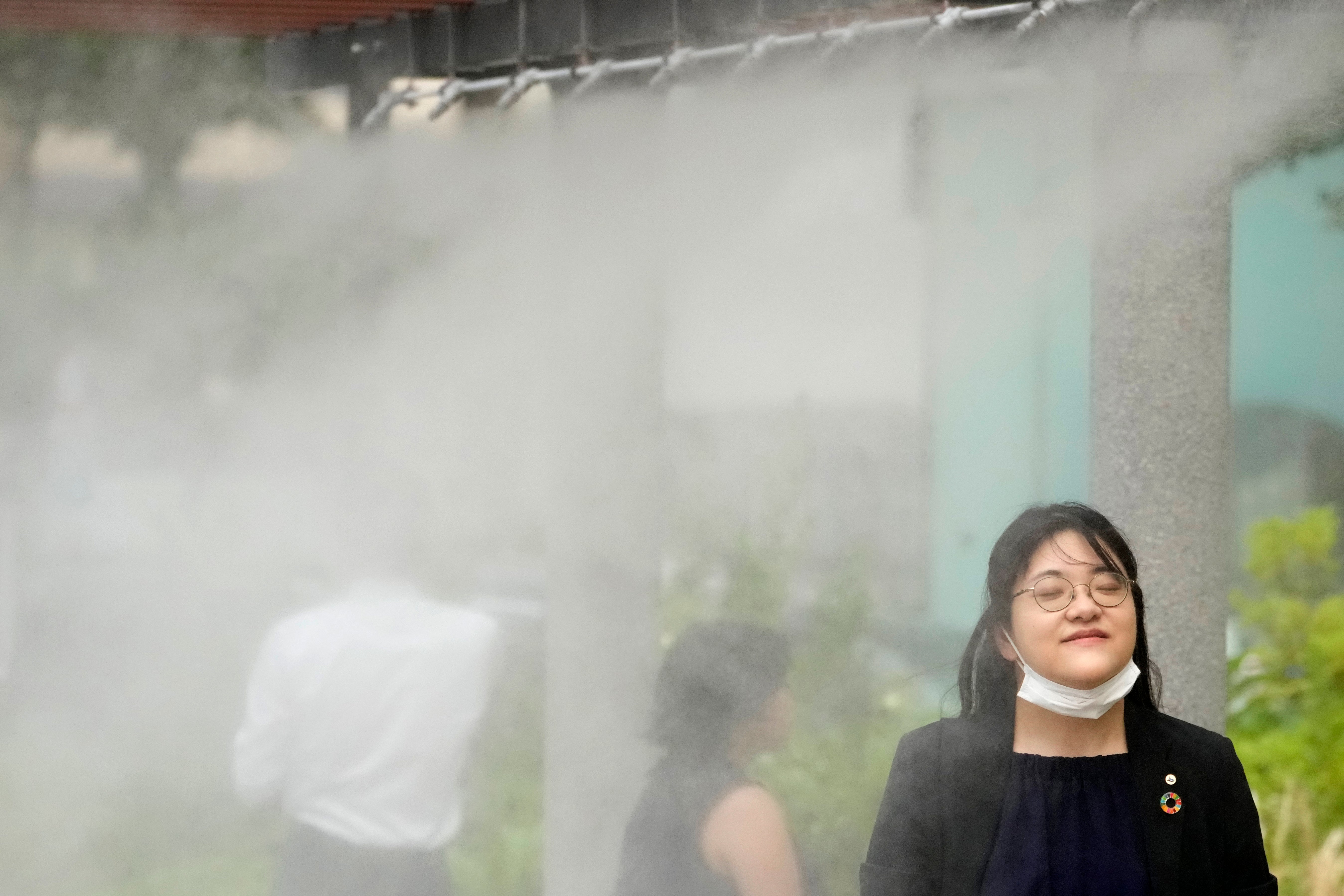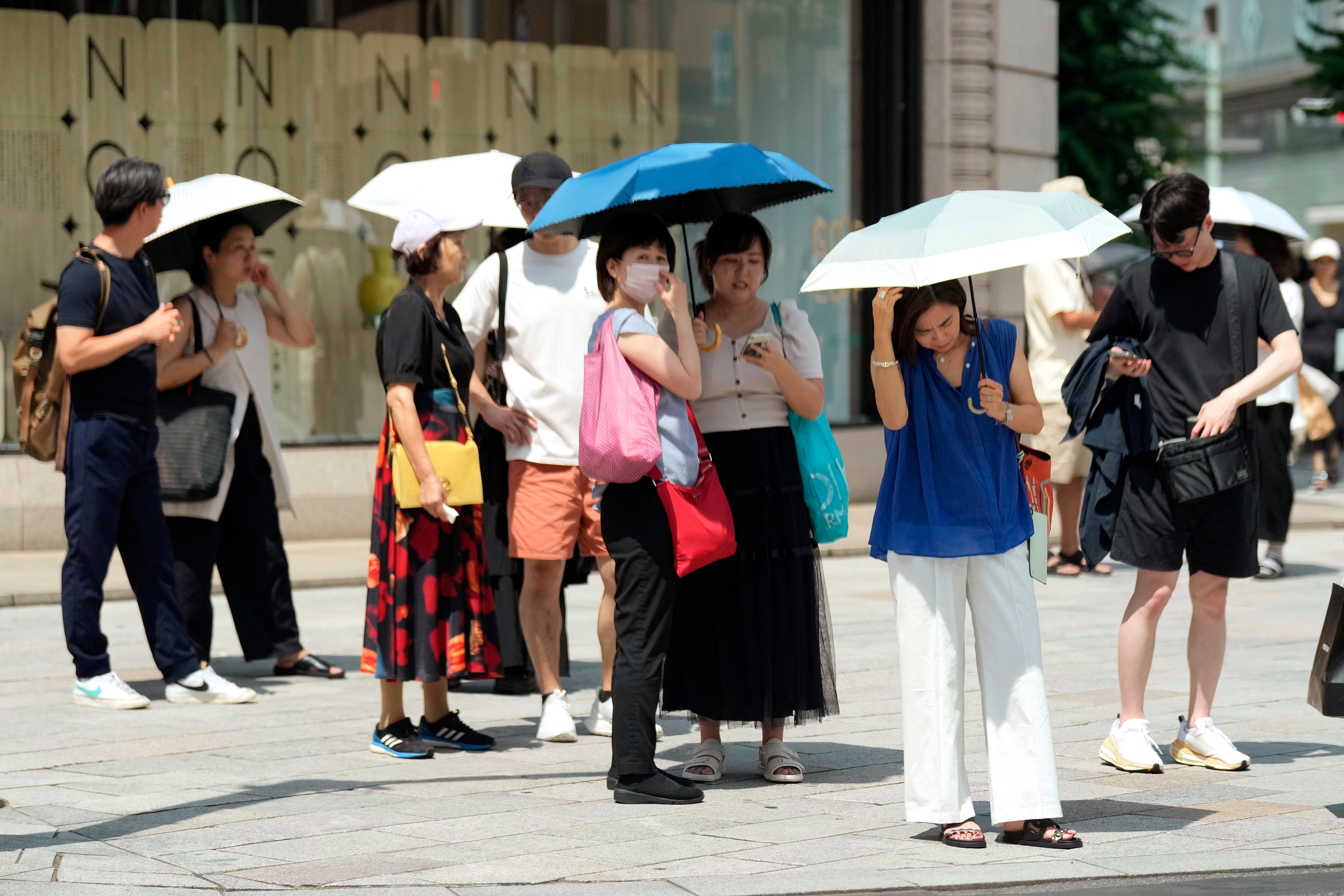Heatstroke kills more than 120 people in Tokyo during record temperatures
More than 37,000 people were treated at hospitals for heatstroke across Japan from July 1 to July 28

Your support helps us to tell the story
From reproductive rights to climate change to Big Tech, The Independent is on the ground when the story is developing. Whether it's investigating the financials of Elon Musk's pro-Trump PAC or producing our latest documentary, 'The A Word', which shines a light on the American women fighting for reproductive rights, we know how important it is to parse out the facts from the messaging.
At such a critical moment in US history, we need reporters on the ground. Your donation allows us to keep sending journalists to speak to both sides of the story.
The Independent is trusted by Americans across the entire political spectrum. And unlike many other quality news outlets, we choose not to lock Americans out of our reporting and analysis with paywalls. We believe quality journalism should be available to everyone, paid for by those who can afford it.
Your support makes all the difference.More than 120 people died of heatstroke in the Tokyo metropolitan area in July, when the nation's average temperature hit record highs and heat warnings were in effect much of the month, Japanese authorities said on Tuesday.
According to the Tokyo Medical Examiner's Office, many of the 123 people who died were elderly. All but two were found dead indoors, and most were not using air conditioners despite having them installed.
Japanese health authorities and weather forecasters repeatedly advised people to stay indoors, consume ample liquids to avoid dehydration and use air conditioning, because elderly people often think that air conditioning is not good for one's health and tend to avoid using it.
It was the largest number of heatstroke deaths in Tokyo's 23 metropolitan districts in July since 127 deaths were recorded during a 2018 heatwave, the medical examiner's office said.
More than 37,000 people were treated at hospitals for heatstroke across Japan from July 1 to July 28, according to the Fire and Disaster Management Agency.

The average temperature in July was 2.16 degrees Celsius (3.89 degrees Fahrenheit) higher than the average over the past 30 years, making it the hottest July since the Japan Meteorological Agency began keeping records in 1898.
On Tuesday, heatstroke warnings were in place in much of Tokyo and western Japan. The temperature rose to about 34 C (93 F) in downtown Tokyo, where many people carried parasols or handheld fans.
“I feel every year the hot period is getting longer,” said Hidehiro Takano from Kyoto. “I have the aircon on all the time, including while I’m sleeping. I try not to go outside.”
Maxime Picavet, a French tourist, showed a portable fan he bought in Tokyo. “It works very, very well,” he said. “With this temperature, it's a necessity."
The meteorological agency predicted more heat in August, with temperatures of 35 C (95 F) or higher.
“Please pay attention to temperature forecasts and heatstroke alerts and take adequate precautions to prevent heatstroke,” it said in a statement.
Meanwhile in China extreme heat baked megacities on the eastern seaboard and sharply pushed up demand for power to cool homes and offices, while scorching temperatures in China’s interior stoked fears of damage to rice crops.
The megacity of Hangzhou, home to 12.5 million people and some of China’s largest companies, banned all non-essential outdoor lighting and light shows this week to conserve energy as extreme heat tested power grids, local authorities said.